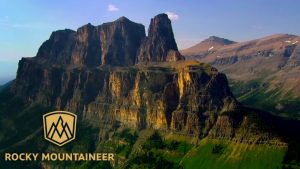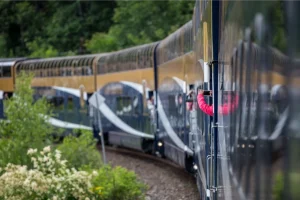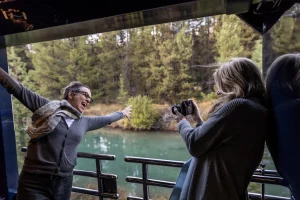
Lake Louise Travel Guide: Top Attractions, Things to do
Lake Louise is one of the most famous and picturesque destinations in the Canadian Rockies. Nestled within Banff National Park in Alberta, this glacier-fed lake is world-renowned for its striking turquoise waters, framed by towering peaks and the stunning Victoria Glacier at its far end.
Named after Princess Louise Caroline Alberta, the lake is overlooked by the magnificent Victoria Glacier and the impressive peaks of Mount Fairview and Mount Victoria. In summer, the area is a hub for activities like canoeing, hiking, and sightseeing, while in winter, the frozen lake transforms into a picturesque skating rink, with the famous Fairmont Chateau Lake Louise providing a stunning backdrop
Table of Contents
An overview
Lake Louise, Alberta, Canada
Located about 60 km northwest of Banff and just over two hours from Calgary, Lake Louise is one of the most visited places in Banff National Park. The lake sits at an elevation of 1,750 metres (5,740 ft), making it a true alpine setting with cooler temperatures and stunning mountain scenery year-round.
Visitors are drawn here not only for the views but also for the wealth of outdoor activities — from canoeing across the calm waters in summer to skating on the frozen lake in winter. The nearby hamlet provides essential services, accommodations, and access to one of Canada’s largest ski resorts.
Getting to Lake Louise

How to get to Lake Louise?
Lake Louise is located within Banff National Park, Alberta, about 60 km (40 mi) northwest of Banff and roughly 180 km (112 mi) from Calgary. It’s accessible year-round, but the journey varies depending on how you choose to travel.
By Car
Driving is the most flexible option. From Calgary, it takes about 2 hours via the Trans-Canada Highway (Highway 1). From Banff, it’s around 40 minutes. Parking at Lake Louise is limited and fills quickly in peak season, so arriving early or late in the day is recommended.
By Shuttle or Bus
Parks Canada operates shuttles from Banff and designated park-and-ride lots directly to Lake Louise. Private tour companies and coach services also run transfers, which are a convenient option during busy summer months when parking is scarce.
By Train
While there’s no regular passenger train service to Lake Louise, visitors can arrive on luxury rail experiences such as the Rocky Mountaineer, which includes Lake Louise as part of some of its Canadian Rockies routes.
By Air
The nearest major airport is Calgary International Airport (YYC). From there, travelers continue by rental car, shuttle, or tour bus to reach Lake Louise.
Why is it so popular?
Lake Louise’s popularity stems from a perfect combination of natural splendor, historical significance, and year-round recreational opportunities.
Iconic Scenery: Turquoise, glacier-fed water set against Victoria Glacier and towering peaks — a postcard-perfect view.
Historic Significance: Tourism here began in the 19th century, with the Fairmont Chateau Lake Louise cementing its status as a world-class resort.
Abundant Activities: Canoeing and hiking in summer, ice skating and skiing in winter make it a year-round destination.
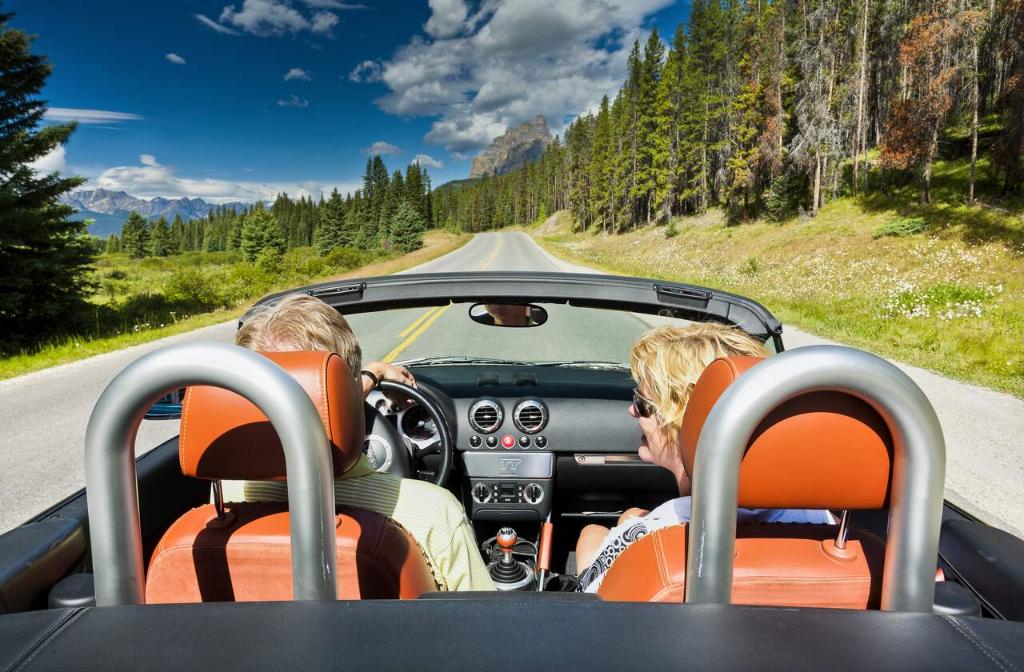
Reservations & Entry Fees
Lake Louise Reservations & Entry Fees
You don’t need a reservation to enter Banff National Park itself, but during the busy summer months (May to October) you’ll usually need to reserve a seat on the Parks Canada shuttle if you want guaranteed access to the Lake Louise lakeshore. Parking is extremely limited and fills very early in the day, so the shuttle is the most reliable way to visit.
To access Lake Louise, you also need a valid Parks Canada entry pass. This can be purchased online, at park gates, or in Banff/Lake Louise visitor centres. Passes are available as daily tickets or as an annual Discovery Pass, which covers all national parks in Canada. Admission is always free for youth under 18, and in 2025 Canada is offering free entry to all visitors from June 20 to September 2 under the Canada Strong Pass program.
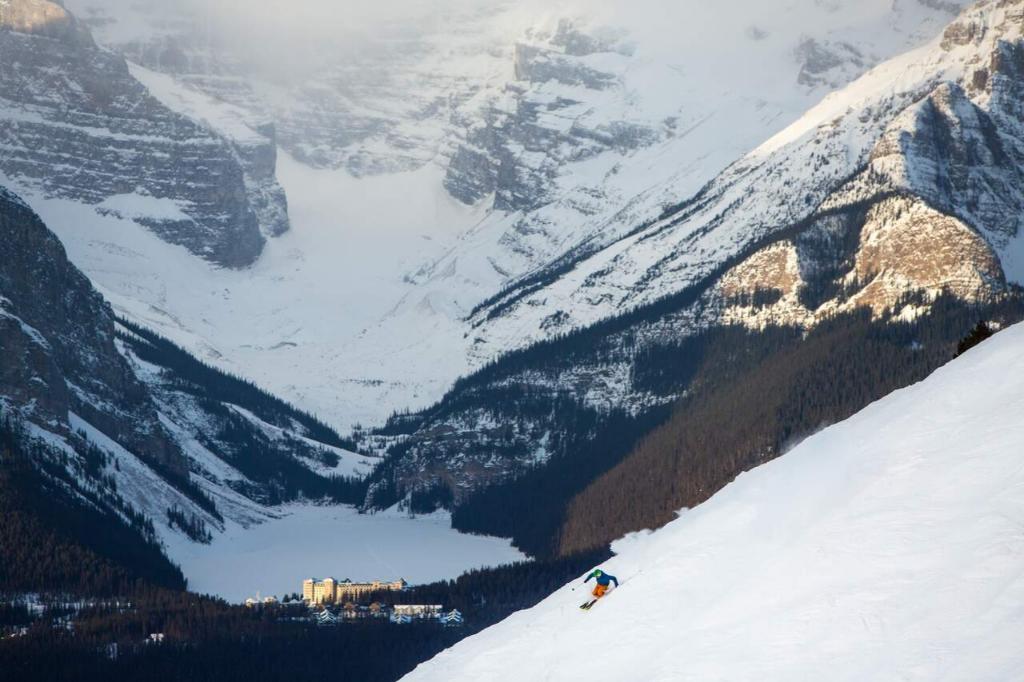
Best Time to Visit
When is the Best Time to Visit Lake Louise?
The best time to visit Lake Louise really depends on what kind of experience you’re after.
Summer (June to September) is when the lake is at its most vibrant, with that famous turquoise color shining brightest under the sun. It’s the perfect season for hiking, canoeing, and taking in the classic postcard views. Be prepared, though — July and August are the busiest months, so arriving early in the morning or later in the evening helps avoid the crowds.
Winter (December to April) transforms Lake Louise into a snowy wonderland. The frozen lake becomes one of the most beautiful skating rinks in the world, and the nearby Lake Louise Ski Resort offers some of the best slopes in the Canadian Rockies.
If you prefer fewer crowds, the shoulder seasons (May and October) can be rewarding too. Spring often means the lake is still thawing, while autumn brings golden larches and crisp mountain air. Both offer a quieter, more relaxed experience, even if the lake isn’t at peak color.
Things to do in lake louise
Whether you’re visiting in the warmth of summer or the magic of winter, Lake Louise offers a wealth of activities for every traveler.
1) Take in the Views from the Lakefront
Start at the shoreline for classic postcard vistas. The Fairmont Chateau Lake Louise faces Victoria Glacier, and shifting light on the lake’s glacial silt creates spectacular color throughout the day.
2) Hike the Scenic Trails
- Lake Agnes Tea House (approx. 3.5 km one way): Moderate climb to a historic tea house with views over Mirror Lake.
- Plain of Six Glaciers (approx. 5.5 km one way): More challenging, with sweeping glacier views and a rustic tea house.
- Fairview Lookout: Short, steep trail to an elevated viewpoint over the lake and Chateau.
3) Canoe on the Turquoise Waters
In summer, rent a canoe beside the Chateau and paddle across calm, mirror-like water surrounded by snow-capped peaks—an unforgettable Lake Louise experience.
4) Embrace Winter Magic
In winter the lake freezes into a natural rink for ice skating. You can also enjoy snowshoeing, cross-country skiing, and seasonal ice sculptures during the Ice Magic Festival.
5) Explore Nearby Highlights
- Moraine Lake: Iconic vistas and trailheads (seasonal access, short drive from Lake Louise).
- Lake Louise Ski Resort: World-class downhill skiing and summer gondola for wildlife viewing.
- Bow Valley Parkway: Scenic drive with frequent chances to spot elk, deer, and bears.
Top Attractions
Top Attractions Near Lake Louise
Moraine Lake
Lake Agnes Tea House
Plain of Six Glaciers
Other NearBy Destinations
While Lake Louise is a breathtaking destination on its own, it also serves as a perfect base for exploring the surrounding Rockies. Just a short drive in any direction brings you to equally stunning spots — from turquoise lakes and powerful waterfalls to charming mountain towns and scenic drives. Visiting these nearby destinations adds even more variety to your Lake Louise adventure.
Banff Townsite (40 min drive)
A lively alpine town with restaurants, shops, museums, and the famous Banff Upper Hot Springs.
Johnston Canyon (30 min drive toward Banff)
A family-friendly hike with catwalks through a canyon leading to Lower and Upper Falls.
Yoho National Park (15–20 min drive west, BC side)
Highlights include Emerald Lake, Takakkaw Falls, and the Natural Bridge — stunning and less crowded than Banff.
Peyto Lake (30 min north along Icefields Parkway)
Famous for its wolf-head shape and brilliant blue color, visible from an accessible viewpoint.
Bow Lake & Bow Glacier Falls (35 min north)
A scenic stop with opportunities for hiking and photography.
Icefields Parkway (Highway 93 North)
Considered one of the world’s most beautiful drives, connecting Lake Louise to Jasper, with countless glaciers, lakes, and viewpoints along the way.
Sunshine Village (45 min drive)
A ski resort in winter and a wildflower hiking destination in summer, just outside Banff.
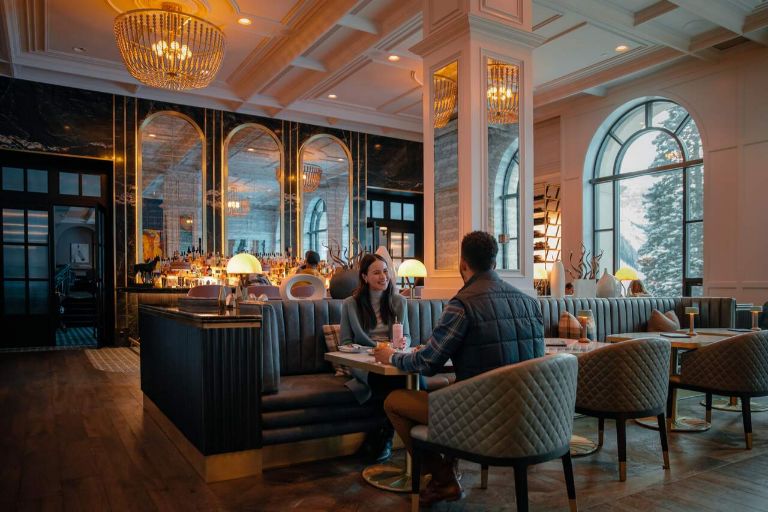
Where to Stay
Where to Stay in Lake Louise?
Despite its small size, Lake Louise offers a range of accommodations, from luxury hotels to cozy lodges.
Luxury: The Fairmont Chateau Lake Louise is the most iconic place to stay, right on the lakeshore with unbeatable views. It offers fine dining, spa services, and direct access to trails — perfect if you’re looking for a once-in-a-lifetime experience.
Mid-Range & Budget: The nearby Lake Louise Inn, Mountaineer Lodge, and HI Lake Louise Alpine Centre provide comfortable options at more affordable prices, with easy access to the village and shuttle services.
Nearby Alternatives: For more variety, the town of Banff (40 minutes away) offers a wide selection of hotels, motels, and vacation rentals. You can also find charming stays in Field, BC (about 30 minutes west in Yoho National Park).
Whether you want lakeside luxury or a simple base for exploring the Rockies, Lake Louise and its surroundings have something to suit every traveler.
FAQs
FAQs: Lake Louise, Alberta
Why is lake louise so blue/turqouise?
Lake Louise gets its striking turquoise-blue color from rock flour — tiny particles of sediment created when glaciers grind against the bedrock. These particles are carried into the lake by meltwater from the Victoria Glacier.
When sunlight hits the water, the rock flour scatters light in a way that gives the lake its famous vivid blue-green hue. The effect is strongest in summer, when glacial melt is at its peak.
How far is Lake Louise from Calgary?
Lake Louise is about 180 kilometers (112 miles) west of Calgary, Alberta. The drive takes roughly 2 to 2.5 hours along the Trans-Canada Highway (Highway 1), depending on traffic and weather. Most visitors travel by rental car, but shuttle services and guided tours are also available for those who prefer not to drive.
How far is Lake Louise from Jasper?
Lake Louise is approximately 230 kilometers (143 miles) south of Jasper along the famous Icefields Parkway (Highway 93).
The drive takes about 3 to 3.5 hours without stops, but most travelers take longer to enjoy the spectacular scenery, glaciers, lakes, and viewpoints along the way.
This route is considered one of the most scenic drives in the world and is a highlight of visiting the Canadian Rockies.
How far is Lake Louise from Banff?
Lake Louise is located about 60 kilometers (37 miles) northwest of Banff town along the Trans-Canada Highway (Highway 1). The drive usually takes 40 to 45 minutes, making it an easy day trip. Many visitors base themselves in Banff and visit Lake Louise by car, shuttle, or guided tour.
Is Lake Louise open year-round?
Yes. Lake Louise is accessible in all seasons. In summer, the lake is turquoise and ideal for hiking or canoeing, while in winter, it freezes for ice skating and nearby skiing. Spring and fall are quieter, though the lake may be partly frozen.
What airport is closest to lake louise?
The nearest major airport to Lake Louise is Calgary International Airport (YYC), located about 180 km (112 miles) southeast of the lake, or a 2–2.5 hour drive via the Trans-Canada Highway. Edmonton International Airport (YEG) is another option, though it is farther away at around 4 hours’ drive.
Can you swim in lake Louise?
Yes, you technically can swim in Lake Louise, but most visitors don’t. The water is extremely cold year-round, usually around 4°C (39°F) even in summer, because it’s fed by glacier melt. Short dips are possible, but it’s not recommended for extended swimming. Instead, most people enjoy the lake by canoe, kayak, or from the shoreline trails.
Can you drive to Lake Louise?
Yes, you can drive directly to Lake Louise via the Trans-Canada Highway (Highway 1). It’s about 40 minutes from Banff and 2 hours from Calgary. Parking is available near the lake, but spaces are very limited in peak summer months. To avoid parking challenges, many visitors choose the Parks Canada shuttles or guided coach tours instead.
Book your tour now
Book your tour now
Lake Louise is more than just a beautiful lake — it’s a year-round destination that combines breathtaking scenery, rich history, and endless outdoor adventures. Whether you’re drawn by the turquoise waters of summer, the snowy magic of winter, or the nearby trails and attractions, this jewel of the Canadian Rockies never disappoints.
To make your trip truly memorable and stress-free, consider booking a guided coach tour or experiencing the journey in style aboard the Rocky Mountaineer. Both options let you sit back, relax, and soak in the incredible landscapes without the hassle of driving or parking.
Start planning your Lake Louise adventure today — book your Rocky Mountain tour and see this world-famous destination for yourself!

